Last-Minute NYC Holiday Gift Guide 🎁
We’ve created a holiday gift guide with presents for the intrepid New Yorker that should arrive just in time—


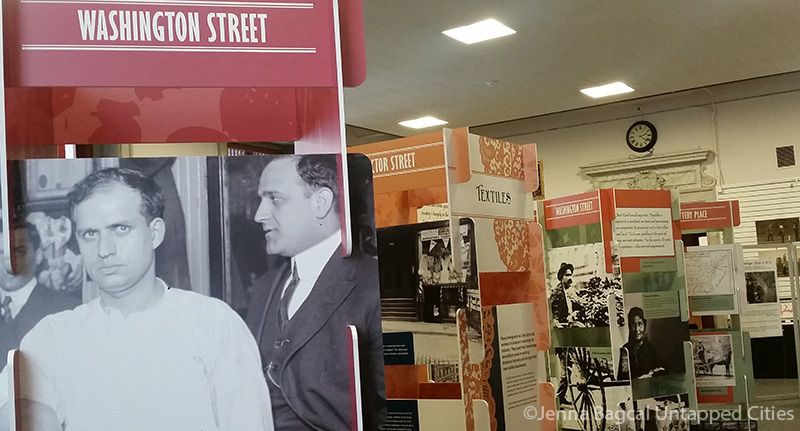
Since 2011, the Syrian Civil War has displaced millions of refugees to nations around the world. This 21st century war parallels the struggles of Syrian immigrants who were forced to find refuge from the war draft in the late 19th and early 20th centuries. The New York City Department of Records and Information Services Visitors Center is hosting the temporary exhibit “Little Syria, NY: An Immigrant Community’s Life and Legacy” that links the past and present experiences of Syrian refugees. This immersive and intimate exhibit gives visitors an in-depth history of Syrians in New York City and the U.S. as a whole.
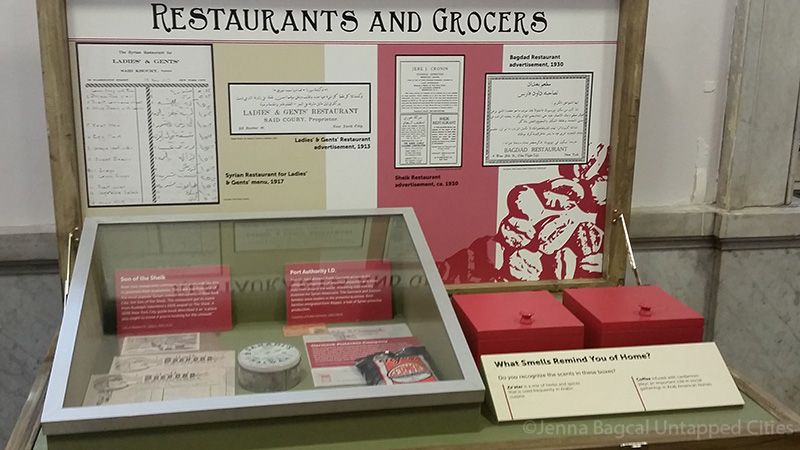
From 1880 to 1940, an influx of Syrian refugees came from the area known as “Greater Syria.” The area was comprised of a number of modern-day countries including, Lebanon, Palestine, Israel and Jordan. According to the United States Department of Commerce and Labor, the largest wave of refugees arrived between 1899 and 1907, when an estimated 41,404 Syrians emigrated to escape the oppressive reign of the Ottoman Empire. The area in which the refugees settled was known as “Little Syria” in what is now Washington Street in Manhattan.
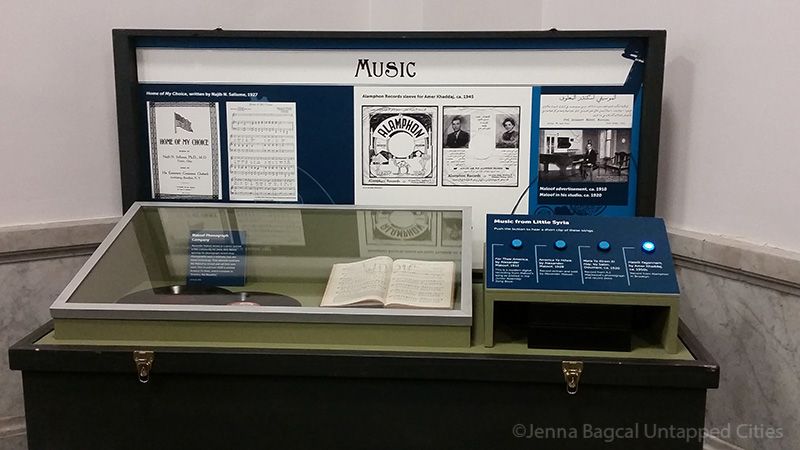
The pieces from the exhibit are on loan from the Arab American National Museum in Dearborn, Michigan and are displayed within two rooms at the 31 Chambers Street location. The rooms contain a combination of informative panels and interactive displays that detail important elements of Syrian life, including peddling culture, fashion, music, religion, literature and food. Much of what the Syrian people brought to the U.S. reflected their country and simultaneously combined with American culture.
Abdessamad Kharmaj, the Community Organizer for the New York City Department of Records, says that although they wished to retain some cultural identity, the Syrians were grateful that the U.S. allowed them to have freedom from oppression. The music interactive features a song called ‘America Ya Hilwa,’ which translates to ‘America the Beautiful.’ “It described their feelings,” says Kharmaj. “They were safer in America and free from the draft.”
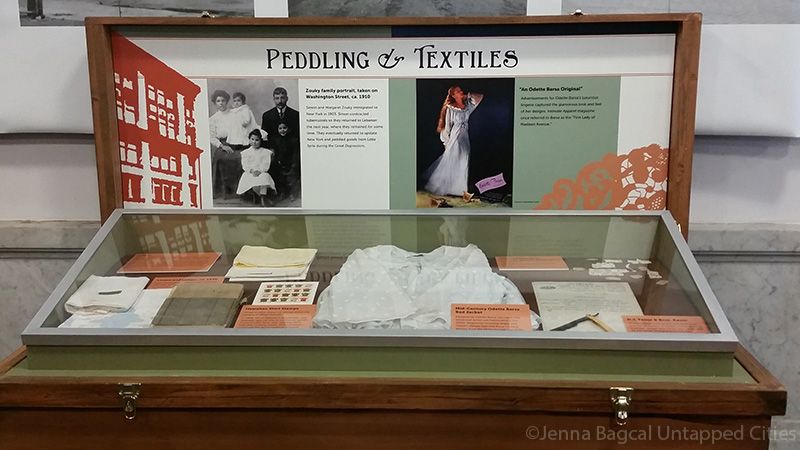
The Little Syria exhibit also features a photo series of a family of Syrian refugees shot by Michael Appleton, the Chief Photographer for the Mayoral Photography Office. The photos of the Ferdous family give an intimate look inside the lives of a family of six who moved to Brooklyn, New York in 2012 after Abdullah Ferdous refused to join the Syrian army.
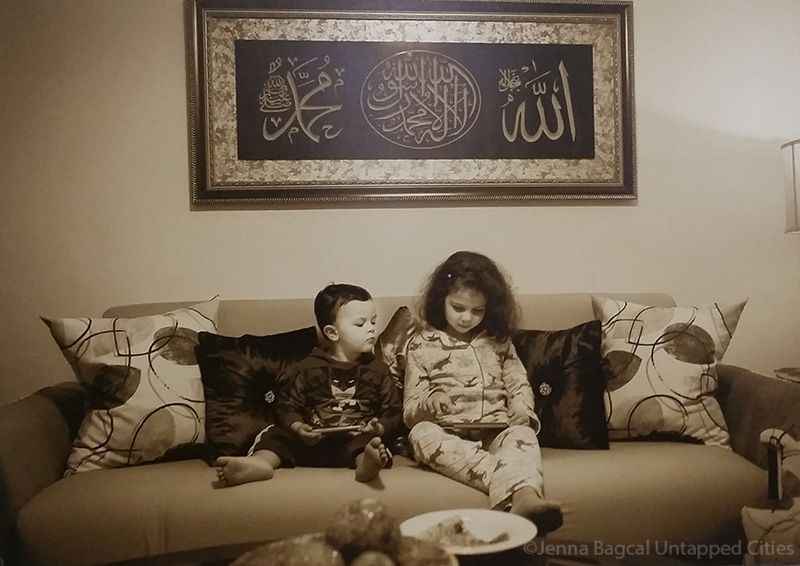
Photo of an original photo by Michael Appleton – Hassan and Souad Ferdous
Kharmaj says that the exhibit illustrates parallels between what Syrian refugees experienced in the 19th and 20th centuries and what Syrian refugees are experiencing in the modern day. “The exhibit was put here to show that New York City is a city of immigrants,” says Kharmaj. “It gives the chance for everyone to live and prosper and welcomes everyone who wants to come here, whether you’re fleeing from a war zone or looking for a better life.”
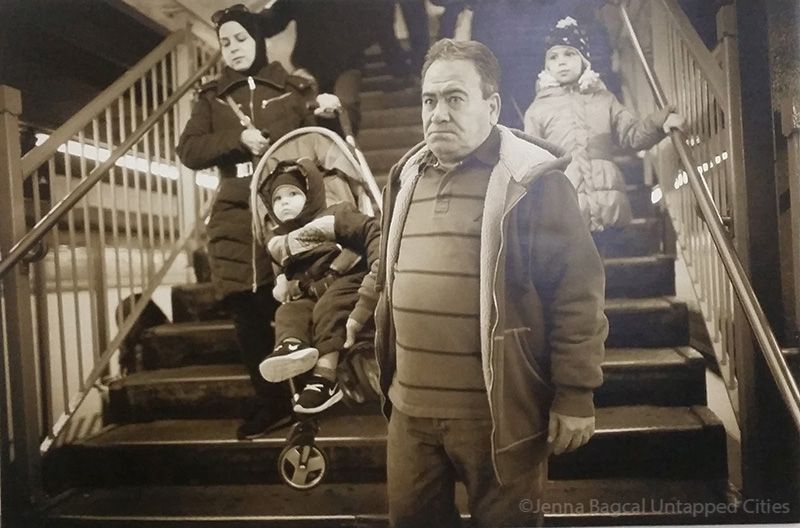
Photo of an original photo by Michael Appleton – Abdullah and Eman Ferdous with their children, Souad and Hassan
Little Syria, NY is on display from now until September 16 and is free to the public. Find out more on the NYC Department of Records website.
Next, check out Little Syria: Manhattan’s Lost Neighborhood, Amidst War, a Budding Cross-Border Brotherhood between Syria and Lebanon, and 5 Lost Neighborhoods in NYC: Radio Row, Little Syria, San Juan Hill, Five Points. Contact the author @jen_bagcal.
Subscribe to our newsletter